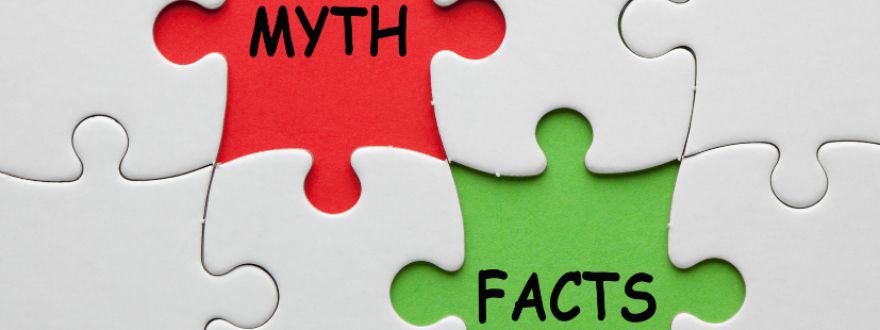
Homeownership in Florida comes with its own unique set of challenges. With hurricane seasons, unpredictable weather, and rising property values, it’s more important than ever to ensure your homeowners insurance policy does what you think it does. Unfortunately, many Florida homeowners are misinformed about what their insurance covers. These misconceptions can lead to serious financial consequences when disaster strikes. That’s why working with a trusted agency like American US Insurance can make all the difference in understanding what’s covered—and what’s not. In this guide, we’ll debunk the most common myths about homeowners insurance and give you practical tips to ensure your home and family are properly protected. Whether you're a new homeowner or you've lived in your house for years, understanding the reality behind these myths can help you avoid costly surprises.
Myth #1: “My policy covers all hurricane damage.”
Reality:
This is one of the most dangerous assumptions a Florida homeowner can make. Most standard homeowners insurance policies cover wind damage, but they do not cover flood damage—and floods are common during hurricanes. Additionally, many policies include a separate hurricane deductible, which is typically a percentage of your home’s insured value. For example, if your home is insured for $300,000 and you have a 5% hurricane deductible, you'll be responsible for the first $15,000 of hurricane-related damage before your insurance kicks in. What You Can Do:
- Review your policy to confirm if you have a separate hurricane deductible.
- Consider adding flood insurance through the National Flood Insurance Program (NFIP) or a private provider—even if you're not in a designated flood zone.
- Discuss windstorm coverage with your agent if you’re in a coastal or high-risk area.
Myth #2: “Personal belongings are fully covered at replacement value.”
Reality:
Many policies only cover personal property at actual cash value—which subtracts from depreciation. That means a 7-year-old couch or TV won’t be worth much on a claim, even if it was expensive to replace. What You Can Do:
- Upgrade your policy to replacement cost coverage for personal items.
- Create a home inventory with photos, receipts, and item values.
- Keep digital backups of your inventory in a cloud storage system or secure drive.
Myth #3: “Flood insurance is only for waterfront homes.”
Reality:
About 25% of flood insurance claims come from homes outside of high-risk flood zones. Florida’s flat terrain and frequent rain make flood risk a concern—even if you don’t live near a lake, river, or the coast. What You Can Do:
- Ask your agent for a flood risk assessment and quote—even if it's not required by your lender.
- Understand that your standard homeowners' insurance never covers flood damage.
- Consider NFIP or private market flood coverage for peace of mind.
Myth #4: “My policy adjusts automatically with my home’s value.”
Reality:
Rising property values and construction costs mean your home may be underinsured if you haven’t updated your policy recently. Insurers don’t automatically adjust your limits unless you request it or your policy includes inflation protection. What You Can Do:
- Review your dwelling coverage annually—especially if you’ve remodeled or seen a rise in local home values.
- Ask about extended replacement cost coverage for more flexibility.
- Ensure your policy reflects the true cost of rebuilding, not just your purchase price.
Myth #5: “If someone gets hurt at my house, it’s not my problem.”
Reality:
If a visitor slips and falls on your property, you could be held legally and financially responsible—even if it was an accident. Liability lawsuits can be expensive, and without enough coverage, your assets could be at risk. What You Can Do:
- Make sure your personal liability coverage is at least $300,000—or higher if you have significant assets.
- Ask about a personal umbrella policy for added liability protection.
- Maintain your property to reduce risks—repair loose handrails, broken steps, or tripping hazards.
Myth #6: “My insurance covers all types of damage.”
Reality:
Homeowners' policies do not cover every type of damage. Common exclusions include:
- Flooding
- Sinkholes (unless added specifically)
- Mold, termites, and other infestations
- Wear and tear or neglect
What You Can Do:
- Read your policy’s exclusions and endorsements carefully.
- Add riders for sinkholes, sewer backup, or equipment breakdown if needed.
- Keep your home well-maintained to avoid coverage issues at claim time.
Real-Life Scenarios: Why This Matters
After Hurricane Ian in 2022, many Florida homeowners were shocked to learn their hurricane deductibles were in the $10,000 range or more —or that their flood damage wasn’t covered at all. One Fort Myers homeowner faced over $200,000 in water damage with no flood policy in place. Another in Tampa had extensive wind damage but had to pay $12,500 out of pocket before coverage kicked in due to their percentage-based hurricane deductible. These scenarios are real, common, and financially devastating—and they could’ve been avoided with the right guidance.
How to Stay Fully Protected
- Schedule an annual insurance review with a licensed agent.
- Ask detailed questions: What’s my deductible? Do I have flood coverage? What’s excluded?
- Don’t assume—verify your coverage line by line.
The Bottom Line
Insurance myths can leave you vulnerable when disaster strikes. As a Florida homeowner, it’s your job to stay informed—and it’s our job at American US Insurance to help you do that. We make it easy to understand your policy, close coverage gaps, and protect your home, family, and finances. Whether you need a quick review or a complete coverage overhaul, we’re here to help. Contact American US Insurance today for a free, no-obligation policy review—before the next storm season rolls in.
